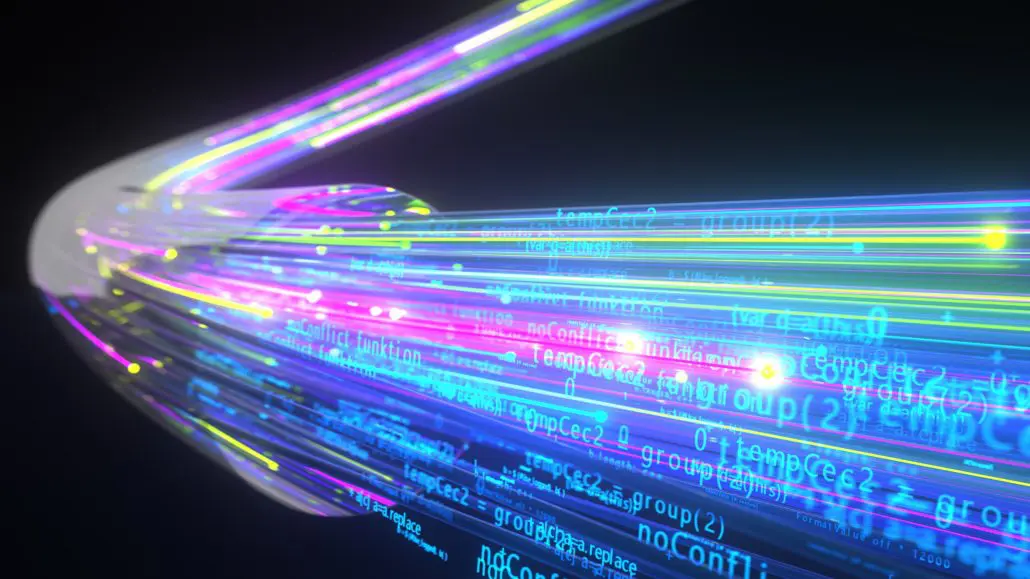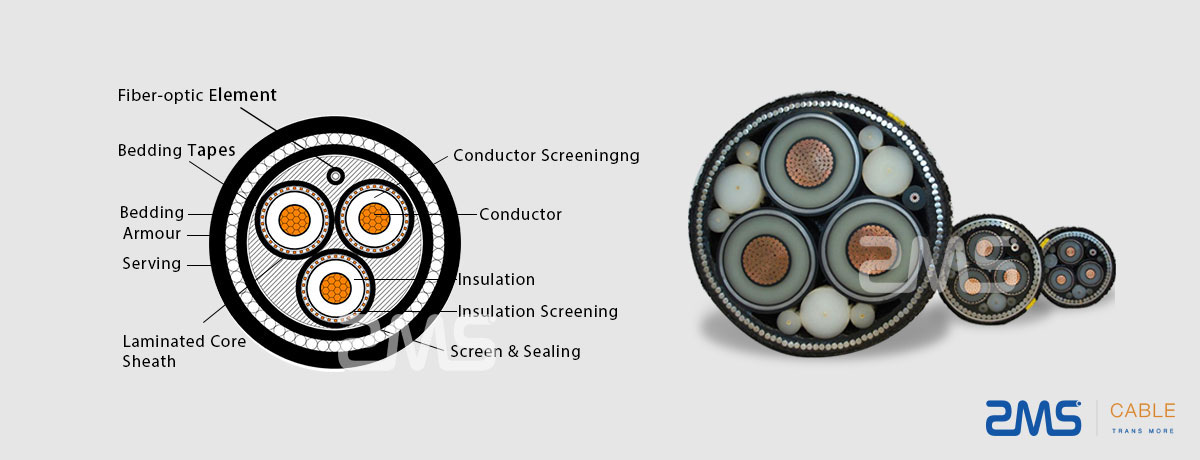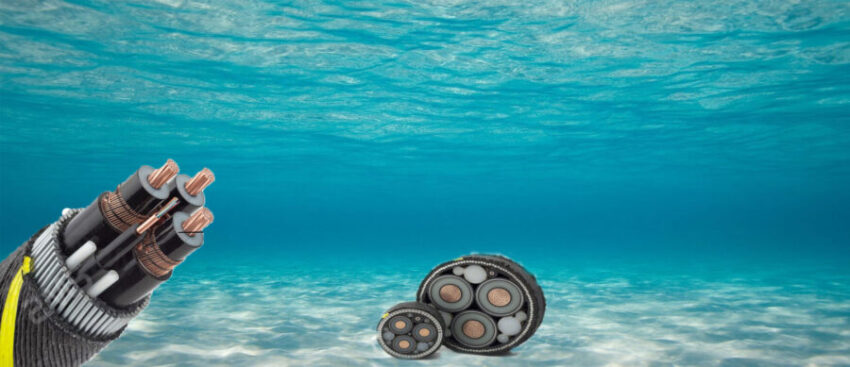해저 통신 케이블은 글로벌 통신 환경에서 중추적인 역할을 합니다., 국제 데이터 전송의 중추 역할을 함. 이 케이블은 해저에 놓여 있습니다., 대륙을 연결하고 전 세계적으로 방대한 양의 정보를 교환할 수 있게 해줍니다.. 이 기사에서는, 우리는 해저 통신 케이블 뒤에 숨은 기술을 탐구할 것입니다, 데이터 신호를 전송하는 방법, 현대 커뮤니케이션에서 이러한 시스템의 중요성.

해저 통신 케이블 이해
잠수함 통신 케이블이란 무엇입니까??
해저 통신 케이블은 데이터 신호의 수중 전송을 위해 특별히 설계된 광섬유 케이블입니다.. 그들 다수의 광섬유로 구성, 압력과 같은 환경 요인으로부터 보호하는 보호층으로 둘러싸여 있습니다., 온도, 그리고 해양생물. 이 케이블은 바다를 가로질러 수천 마일을 뻗을 수 있습니다, 도시와 국가를 연결하다, 인터넷에 필수적으로 만들기, 핸드폰, 그리고 텔레비전 서비스.
역사와 발전
최초로 성공적인 해저 케이블이 부설되었습니다. 1850, 처음에는 구리선을 사용하여 전신 메시지를 전송했습니다.. 수십년에 걸쳐, 기술이 발전했다, 1980년대 광섬유 케이블의 도입으로 이어짐. 광섬유는 빛을 사용하여 데이터를 전송합니다., 기존 구리 케이블에 비해 더 높은 대역폭과 더 빠른 속도를 허용합니다.. 오늘, 해저 통신 케이블은 운반에 매우 중요합니다. 95% 대륙간 데이터 트래픽의.
잠수함 통신 케이블의 작동 원리
해저통신케이블의 구조
해저 케이블은 일반적으로 여러 레이어로 구성됩니다., 각각은 특정 목적을 수행합니다.:
- 핵심 (광섬유): 케이블의 중앙에는 광섬유가 있습니다., 빛 신호를 전달하는 얇은 유리나 플라스틱 가닥입니다.. 각 광섬유는 장거리에 걸쳐 놀라운 속도로 데이터를 전송할 수 있습니다..
- 클래딩: 코어를 둘러싸는 클래딩, 다른 종류의 유리로 만들어졌는데. 이 층은 빛을 코어로 다시 반사합니다., 광 신호가 빠져나가지 않도록 하고 효율적인 전송을 허용합니다..
- 완충 코팅: 완충 코팅은 습기와 물리적 손상으로부터 섬유를 보호합니다., 추가적인 힘 제공.
- 강점 회원: 이들은 일반적으로 다음으로 만들어집니다. 강철 와이어 또는 케블라를 사용하여 외부 압력과 낚시 활동이나 자연 재해로 인한 손상 가능성으로부터 케이블을 보호합니다..
- 아우터 자켓: 마지막 레이어는 외부 재킷입니다., 해양 환경으로부터 추가적인 보호를 제공합니다., 바닷물 부식 및 마모 포함.

데이터 전송 프로세스
- 신호 생성: 데이터 신호는 전송 스테이션에서 생성됩니다., 일반적으로 육지에 위치. 이러한 신호는 레이저를 사용하여 광 펄스로 변환됩니다..
- 섬유를 통한 전송: 광 펄스는 광섬유를 통해 이동합니다.. 내부전반사의 원리로 인해, 빛은 핵 안에 남아있습니다, 심각한 신호 손실 없이 장거리 이동이 가능합니다..
- 중계기: 매우 장거리용, 리피터는 케이블을 따라 간격을 두고 배치됩니다.. 이 장치는 광 신호를 재생성합니다., 장기간에 걸쳐 무결성을 유지하기 위해 증폭. 현대의 해저 케이블은 매 순간마다 리피터를 가질 수 있습니다. 50-100 킬로미터, 사용된 디자인과 기술에 따라.
- 리셉션: 수신측에서는, 광 펄스는 다시 전기 신호로 변환됩니다., 그런 다음 컴퓨터 및 기타 장치에서 처리할 수 있습니다..
해저통신케이블 핵심기술
- 파장 분할 다중화 (WDM): 이 기술을 사용하면 서로 다른 파장을 사용하여 여러 데이터 신호를 동일한 광섬유를 통해 동시에 전송할 수 있습니다. (그림 물감) 빛의. 이는 케이블의 용량을 크게 증가시킵니다..
- 고밀도 파장 분할 다중화 (DWDM): WDM의 고급 형태, DWDM은 한 번에 수십 개의 파장을 전송할 수 있습니다., 데이터 처리량과 효율성을 획기적으로 향상.
- 오류 수정 프로토콜: 데이터 무결성을 보장하려면, 해저 케이블은 전송 중에 발생할 수 있는 오류를 식별하고 수정하는 오류 수정 프로토콜을 사용합니다..
해저 통신 케이블의 중요성
글로벌 연결
대륙과 국가를 연결하는 해저통신 케이블, 글로벌 커뮤니케이션 촉진. 그들은 인터넷 서비스를 지원합니다, 국제전화, 그리고 심지어 텔레비전 및 라디오 네트워크를 위한 방송. 이 케이블이 없으면, 세상은 훨씬 덜 상호 연결될 것이다, 그리고 현대의 많은 편의시설은 불가능할 것입니다.

경제적 영향
해저 통신 케이블의 재정적 영향은 심오합니다.. 그들은 디지털 경제를 지원합니다, 기업이 국경을 넘어 효율적으로 운영될 수 있도록 지원. 안정적인 인터넷 연결이 경제 성장을 촉진합니다., 혁신, 다양한 분야의 일자리 창출과.
신기술 지원
해저 케이블은 또한 신기술의 성장을 가능하게 합니다., 클라우드 컴퓨팅과 같은, 스트리밍 서비스, 그리고 사물인터넷 (IoT). 더 많은 장치가 연결될수록, 대역폭에 대한 수요가 증가합니다., 견고한 해저 케이블 시스템이 그 어느 때보다 중요해졌습니다..
과제 및 고려 사항
유지보수 및 수리
해저 통신 케이블을 유지하고 수리하는 것은 복잡한 작업입니다.. 수중 환경은 수많은 문제를 야기합니다, 혹독한 날씨를 비롯해, 수중 해류, 어망이나 선박 닻으로 인한 잠재적인 손상. 첨단 기술을 탑재한 전문 선박을 이용해 손상된 케이블을 찾아 수리합니다., 서비스 중단을 최소화합니다..
환경에 미치는 영향
그만큼 해저 케이블의 설치 및 유지보수 환경에 영향을 미칠 수 있다, 해양 서식지에 대한 파괴를 포함하여. 그러므로, 이러한 영향을 완화하려면 신중한 계획과 평가가 필수적입니다.. 규제 기관에서는 케이블 프로젝트가 승인되기 전에 환경 영향 연구를 요구하는 경우가 많습니다..
보안 문제
해저 케이블은 방대한 양의 민감한 데이터를 운반하므로, 보안 위협에 취약하다. 이러한 인프라를 표적으로 삼는 사이버 공격은 글로벌 통신에 치명적인 영향을 미칠 수 있습니다.. 잠수함 통신 시스템의 보안을 강화하기 위한 노력이 진행 중입니다., 암호화 및 모니터링 기술 포함.

해저 통신 케이블의 미래
수요 증가
세상이 디지털 커뮤니케이션에 점점 더 의존하게 되면서, 대역폭에 대한 수요는 계속해서 증가하고 있습니다.. 잠수함 통신 케이블은 이러한 수요를 충족하는 데 중요한 역할을 할 것입니다., 새로운 케이블 시스템에 대한 투자와 기존 시스템의 업그레이드로 이어짐.
기술의 발전
해저 통신 케이블의 성능을 향상시키기 위한 기술 발전이 준비되어 있습니다.. 공간 분할 다중화 및 양자 통신과 같은 혁신으로 데이터 전송 속도와 보안이 더욱 향상될 수 있습니다..
지속 가능성 이니셔티브
환경 문제에 대한 인식이 높아지면서, 업계도 지속 가능성에 초점을 맞추고 있습니다.. 미래의 해저 케이블 프로젝트는 환경 영향을 줄이기 위해 친환경 재료와 방법을 통합할 수 있습니다..
잠수함 통신 케이블은 현대 글로벌 통신의 초석입니다., 바다를 건너 방대한 양의 데이터를 전송하고 전 세계 사람들을 연결합니다.. 이 케이블의 작동 방식 이해, 그들의 중요성, 그들이 직면한 과제는 디지털 생활을 지원하는 인프라에 대한 귀중한 통찰력을 제공합니다.. 기술이 계속 발전하면서, 해저 통신 케이블은 점점 더 연결되는 세계의 증가하는 수요를 충족시키기 위해 의심할 여지 없이 적응할 것입니다..


